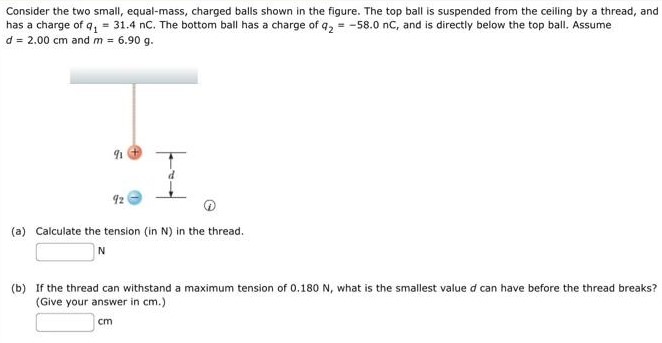Consider the two small, equal-mass, charged balls shown in the figure. The top ball is suspended from the ceiling by a thread, and has a charge of q1 = 31.4 nC. The bottom ball has a charge of q2 = −58.0 nC, and is directly below the top ball. Assume d = 2.00 cm and m = 6.90 g. (a) Calculate the tension (in N) in the thread. N (b) If the thread can withstand a maximum tension of 0.180 N, what is the smallest value d can have before the thread breaks? (Give your answer in cm.) cm
